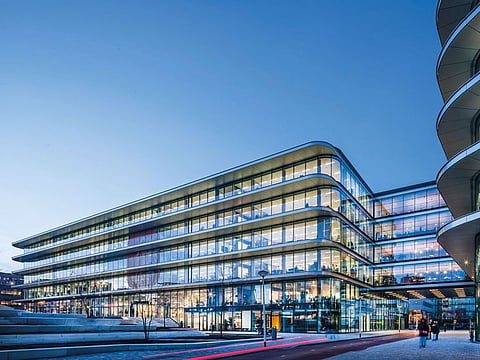Sustainable business is better business for ING
ING is inculcating sustainability in the heart of its operations

ING shares a deep concern for climate change. A pioneer in the finance sector, it has been working on sustainability through its partner clients for some time now.
Active in the Middle East for years, ING covers a range of wholesale banking activities, including syndicated lending, financial markets, international real estate financing and sustainable finance. The core element of its service strategy though is to aim to put sustainability at the heart of its operations, all the while helping clients along in their transition to a low-carbon future. It’s no easy task, as every sector has its own complexities and balances, but ING aims to get the balance right.
Priorities marked
Sebastian Frederiks, Head of Wholesale Banking - Middle East, ING, says “We’ve noticed a surge of interest from local businesses to prioritise environmental, social and governance (ESG) standards. This has partly been prompted by various government initiatives that set ambitious clean energy targets.”
In Qatar, for instance, ING supported Qatar National Bank (QNB) one of the bank’s long-standing clients to establish QNB’s Green, Social and Sustainability Bond Framework. In 2020, ING was the sole sustainability advisor and joint leader manager for Qatar’s first ever green bond, issued by QNB.

A year later, back home in the UAE, ING participated in the Gulf region’s first sustainability-linked loan for Emirates NBD, Dubai’s biggest bank, which linked sustainability metrics such as water conservation to the interest rate of the loan. ING was also hired recently by Abu Dhabi Commercial Bank as joint sustainability structuring advisor in a green bond. Besides, in October this year ING was mandated by Mubadala (Abu Dhabi’s Sovereign Wealth Fund) as Joint Green Structurer, joint lead manager and joint bookrunner on their $750 million debut Green Bond issuance. ING was also hired by RAK Bank as Sustainability Structuring Advisor for the region’s first Social Finance Framework.
ING has invested billions of euros in wind farms, solar energy, and geothermal power production, while its businesses support the transition to a low-carbon economy, for example through green bonds. The institution plans to continue financing billions of euros in green energy projects through green loans and bonds, sustainability-linked products and other innovative products and financing constructions.
Fighting global warming
ING’s biggest impact, its management believes is with its lending portfolio. The financial institution is aligning this with the most ambitious goal of the Paris Climate Agreement to limit global warming to 1.5 degrees Celsius, or net zero greenhouse gas emissions by 2050.
“To keep global warming below 1.5 degrees Celsius, we follow the scientific insight that CO2 emissions should decrease by 45 per cent at global level by 2030 from 2019,” says Frederiks. “We commit to reduce our CO2 emissions in our own operations (from ING buildings and data centres, our so-called scope 1 and 2 emissions) by at least 45 per cent by 2030 from 2019. The aim for ING is to steer the nine highest emitting sectors in its loan book in line with the Paris Agreement’s goal of 1.5 degrees. Setting and refining interim targets to help its clients in their transition to a net zero society, ING is doing its bit to pursue the goal to minimise global climate change. “We report in our annual climate report on the progress we’ve made with our climate approach,” says Frederiks. Sometimes ING also declines business. By policy it has decided to stop providing dedicated project financing for new oil and gas fields and to restrict the financing of the mid-stream infrastructure that supports the development of those fields. ING is also reducing the financing of coal-fired power plants to close to zero by 2025. We finance a lot of sustainable things, but we still finance more that’s not.”
Ultimately, sustainable business is better business, believes Frederiks. “That is why our responsibility is to use our financing, advisory products and services to actively support client’s transition to new sustainable business models that will ensure their success in the future. That being said, while we finance a lot of sustainable things, we still finance more that’s not.” ING also chooses to lead by example by striving for net zero in its own operations at its global offices.
Sustainability starts at home
For one, ING monitors and manages its environmental impact closely and believes in being transparent about the climate impact of its operations. The institution also aims to source 100 per cent renewable electricity each year for all ING buildings where it has management control worldwide, using RE100 technical criteria as a reference for reporting. ING is also improving the impact of its business travel, for example through fleet electrification, thereby integrating sustainability in its procurement processes.
Sign up for the Daily Briefing
Get the latest news and updates straight to your inbox



_resources1_16a08544ee2_large.jpg?w=320&auto=format%2Ccompress&fit=max)